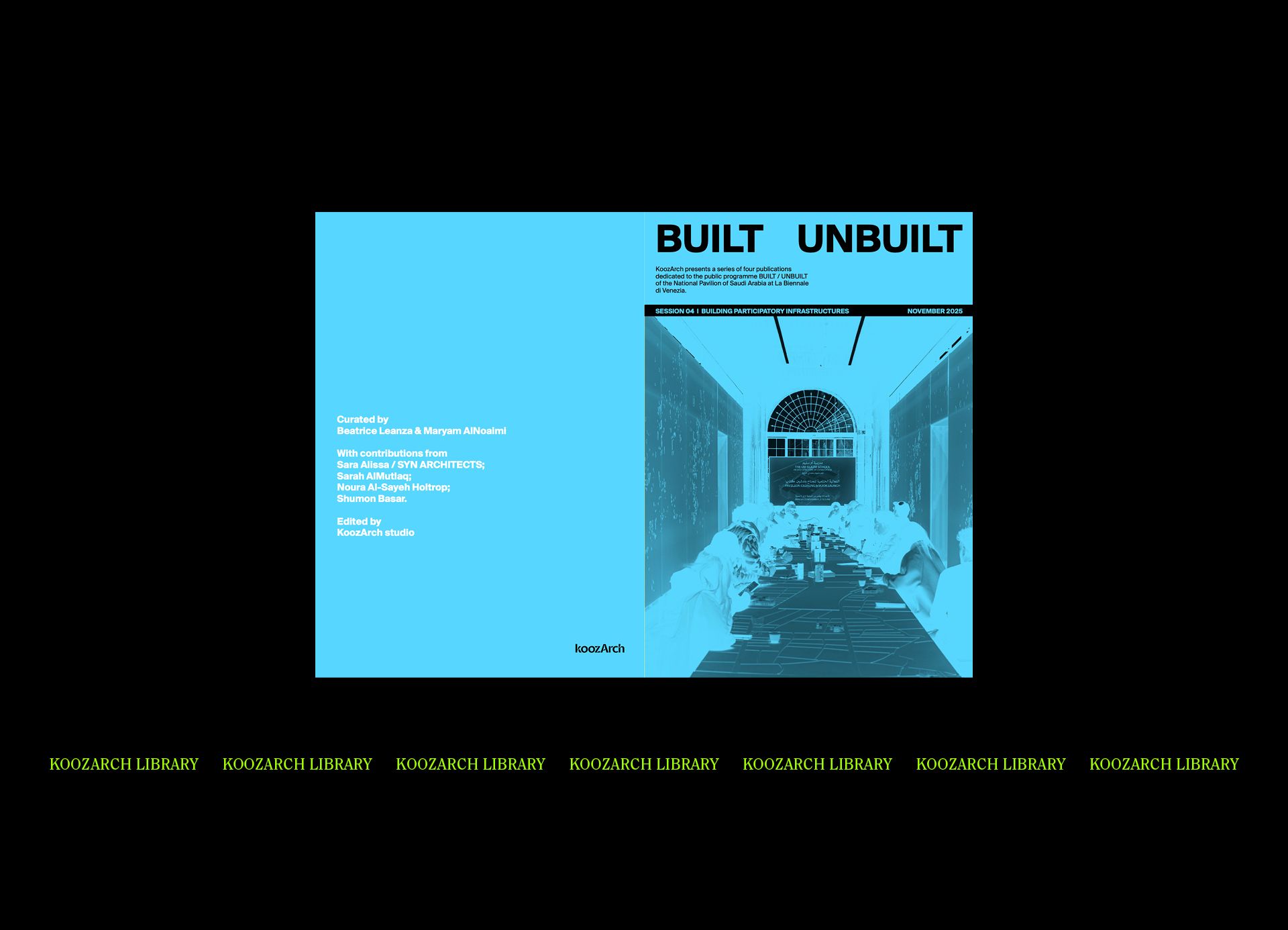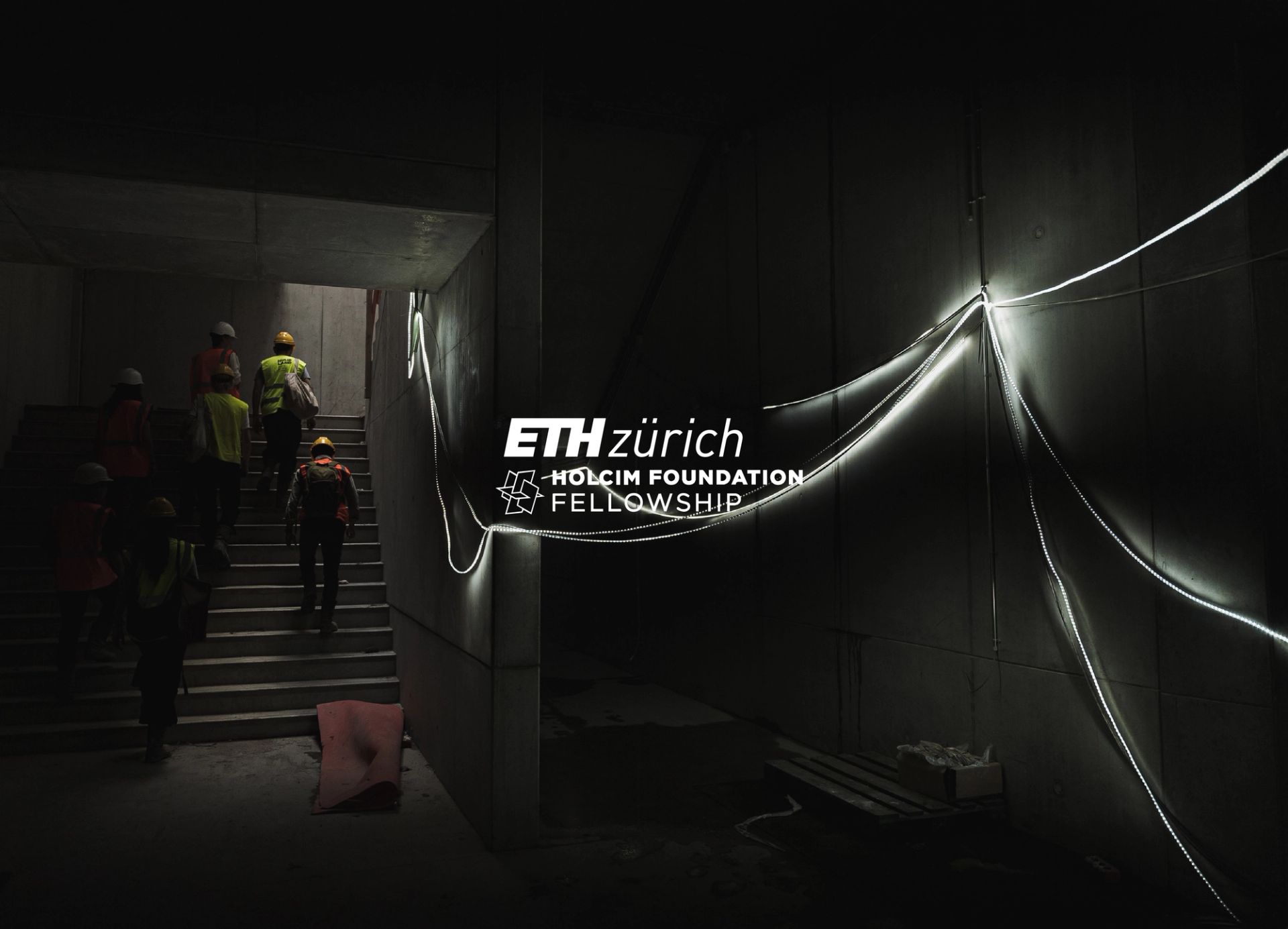Terreform ONE (Open Network Ecology) is a nonprofit art, architecture, and urban design research group committed to combat the extinction of all planetary species through pioneering design acts. An interdisciplinary lab of heterogeneous designers, the group addresses urgent urban, environmental, and societal concerns. In this interview, we discuss the publication "Design with Life. Biotech Architecture and Resilient Cities" (Actar Publishers, 2019), co-authored with Maria Aiolova, the links that join design with social justice and sustainability, what it means to design with living matter and the importance of integrating biology and environmental understanding into architectural education.
KOOZ In the introduction to the book, you describe your studio space as a "science garage" or a "hackerspace". How has this influenced the way you approach architectural design and how does this departure from traditional atelier models contribute to the production of projects that respond to contemporary issues?
MITCHELL JOACHIM There is nothing precious in a garage. One can also identify them as “hackerspaces”—a very Brooklyn-ish thing. Located in an urban fringe zone, such a variegated space departs drastically from the cherished ultra-clean atelier models of previous generations. We find this flowing typology the best-suited spatial arrangement for producing projects that react dynamically to undeviating, transient, or long-lasting issues in design.
KOOZ You collaborate with specialists from diverse qualifications and methodologies to develop your projects. In what ways does Design with Life challenge traditional unidimensional approaches to architecture and urban design?
MJ Our urban design research efforts span over twenty years of illuminating environmental issues as an amalgam of anthropocentric and ecologically balanced artifacts, procedures, and spaces. Over this period we have established sensitive works that serve as an interdisciplinary authority in nature intensive design operations at the intersection of art, architecture, and cities. Searching for how design intentions are derived and why they are cultivated into tangible site-specific interventions, the work is fortified in embodied knowledge, or an understanding attained through practice and field deployment. These arts intensive schemes find continuous dissemination for urban public consumption.
Our projects are often composed with 100% living nutrients. Design becomes indistinct and fits itself symbiotically into the surrounding ecosystem.
KOOZ How does the use of “actual living matter” in design contribute to the goals of social justice and environmental sustainability? Can you provide examples from your work at Terreform ONE?
MJ Our projects are often composed with 100% living nutrients. Here, traditional anthropocentric doctrines are overturned and human life is subsumed within the terrestrial environs. Design, in this sense, becomes indistinct and fits itself symbiotically into the surrounding ecosystem. This design concept is intended to replace the outdated building solutions like balloon framing suburban homes. We propose a method to grow homes from native trees. A living structure is grafted into shape with prefabricated Computer Numerical Controlled (CNC) reusable scaffolds. Therefore, we enable structures to be fully integrated into an ecological community. Our “Home Alive” and “Fab Tree Hab” are great examples of this effort.
We want to be more relevant and influential as citizens of this planet and have a conversation that makes sense to ever-increasing numbers of people
KOOZ You understand Terraform ONE as a research institute and platform that brings forward the power of design in relationship to local communities and planetary metabolism. How does your work negotiate and address these two different scales of impact?
MJ We began as an architecture group, but we realized that design itself is even bigger than architecture. The power of the human imagination is a phenomenal instrument. It is an extraordinary tool that we can use in all different sectors and disciplines to come up with solutions to our world’s problems. We work on problems that are genuinely difficult and that bleed through many different spheres of interest. We’re also restless—we want to do more. As architects, we have this incredible love for the field, and we want to have a broader reach. We want to be more relevant and influential as citizens of this planet and have a conversation that makes sense to ever-increasing numbers of people.
We should make climate and environmental awareness an active part of that interdisciplinary education.
KOOZ You assure that designers ought to work with nature in order to stay relevant. How can the integration of biology and architectural design principles create a more sustainable future, and what steps can be taken to encourage this integration within the field of architecture education?
MJ There must be environmental understanding and information woven into all education. Comprehension of climate change and the world around us will not be relegated to only environmental studies and science students; instead it will be incorporated into all pedagogy. Architecture schools are full of creative students that are deeply involved in arts and humanities and will therefore have to find ways to incorporate environmental awareness into all aspects of learning, not just the obvious choices. Possible ideas include climate-awareness projects, material studies, policy/ planning ideas, performance/ action pieces, and other humanities-based understandings of climate change. Architecture is an interdisciplinary field and we should make climate and environmental awareness an active part of that interdisciplinary education.
Our goal is to create industrial-strength socio-ecological systems to take on the polluting agents of Earth.
KOOZ What role do you see for the field of architecture in addressing urgent urban, environmental, and societal concerns? How can the regenerative use of natural materials and the emergent field of socio-ecological urban design contribute to this effort?
MJ We view ourselves as sort of choreographers, attempting to conjoin the scientific with the social. Our goal—in fact, our charge—is to create industrial-strength socio-ecological systems to take on the polluting agents of Earth. Pioneering projects that are refocused to discover and expand the larger framework of regenerative urbanism are vital. Primarily the research at Terreform ONE cultivates innovative concepts and technologies for sustainability in energy, transportation, infrastructure, buildings, manufacturing, waste treatment, food, air quality, and water. As novel investigations they are derived from the effective techniques explored within the joint territory of regenerative design, social science, and synthetic biology. We explore the emergent socio-ecological solutions that make a direct impact on our dynamically altered atmosphere. The nature of the next impending catastrophe and how design is implicated has yet to be determined.
Bio
Mitchell Joachim, Co-Founder of Terreform ONE and an Associate Professor of Practice at NYU. Formerly, he was an architect at the offices of Frank Gehry and I.M. Pei. He has been awarded a Fulbright Scholarship and fellowships with TED, Moshe Safdie, and Martin Society for Sustainability, MIT. He was chosen by Wired magazine for "The Smart List” and selected by Rolling Stone for “The 100 People Who Are Changing America”. Mitchell won many honors and is featured as “The NOW 99” in Dwell magazine and “50 Under 50 Innovators of the 21st Century” by Images Publishers. He co-authored four books, “Design with Life: Biotech Architecture and Resilient Cities,” “XXL-XS: New Directions in Ecological Design,” “Super Cells: Building with Biology,” and “Global Design: Elsewhere Envisioned”. His design work has been exhibited at MoMA and the Venice Biennale. He earned: PhD at Massachusetts Institute of Technology, MAUD Harvard University, M.Arch Columbia University.
Terreform ONE [Open Network Ecology] is a nonprofit art, architecture, and urban design research group. We endeavor to combat the extinction of all planetary species through pioneering acts of design. Our projects aim to illuminate the environmental possibilities of habitats, cities and landscapes across the globe.
Federica Zambeletti is the founder and managing director of KoozArch. She is an architect, researcher and digital curator whose interests lie at the intersection between art, architecture and regenerative practices. In 2015 Federica founded KoozArch with the ambition of creating a space where to research, explore and discuss architecture beyond the limits of its built form. Parallel to her work at KoozArch, Federica is Architect at the architecture studio UNA and researcher at the non-profit agency for change UNLESS where she is project manager of the research "Antarctic Resolution". Federica is an Architectural Association School of Architecture in London alumni.





